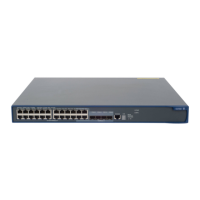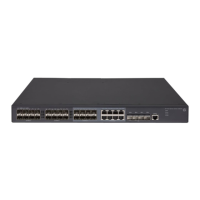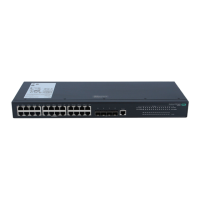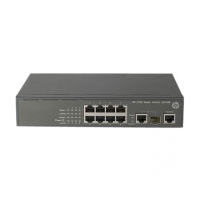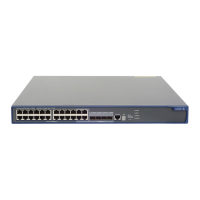43
[RouterB] rip
[RouterB-rip-1] network 1.0.0.0
[RouterB-rip-1] version 2
[RouterB-rip-1] undo summary
# Configure Router C.
<RouterC> system-view
[RouterB] rip
[RouterC-rip-1] network 1.0.0.0
[RouterC-rip-1] version 2
[RouterC-rip-1] undo summary
# Configure Router D.
<RouterD> system-view
[RouterD] rip
[RouterD-rip-1] network 1.0.0.0
[RouterD-rip-1] version 2
[RouterD-rip-1] undo summary
# Configure Router E.
<RouterE> system-view
[RouterE] rip
[RouterE-rip-1] network 1.0.0.0
[RouterE-rip-1] version 2
[RouterE-rip-1] undo summary
# Display all active routes in the RIP database on Router A.
[RouterA] display rip 1 database
1.0.0.0/8, auto-summary
1.1.1.0/24, cost 0, nexthop 1.1.1.1, RIP-interface
1.1.2.0/24, cost 0, nexthop 1.1.2.1, RIP-interface
1.1.3.0/24, cost 1, nexthop 1.1.1.2
1.1.4.0/24, cost 1, nexthop 1.1.2.2
1.1.5.0/24, cost 2, nexthop 1.1.1.2
1.1.5.0/24, cost 2, nexthop 1.1.2.2
The output shows two RIP routes destined for network 1.1.5.0/24, with the next hops as Router B
(1.1.1.2) and Router C (1.1.2.2), and with the same cost of 2.
3. Configure an additional metric for a RIP interface:
# Configure an additional metric of 3 for RIP-enabled interface Ethernet 1/2.
[RouterA] interface ethernet 1/2
[RouterA-Ethernet1/2] rip metricin 3
# Display all active routes in the RIP database on Router A.
[RouterA-Ethernet1/2] display rip 1 database
1.0.0.0/8, auto-summary
1.1.1.0/24, cost 0, nexthop 1.1.1.1, RIP-interface
1.1.2.0/24, cost 0, nexthop 1.1.2.1, RIP-interface
1.1.3.0/24, cost 1, nexthop 1.1.1.2
1.1.4.0/24, cost 2, nexthop 1.1.1.2
1.1.5.0/24, cost 2, nexthop 1.1.1.2
The output shows that only one RIP route reaches network 1.1.5.0/24, with the next hop as Router
B (1.1.1.2) and a cost of 2.
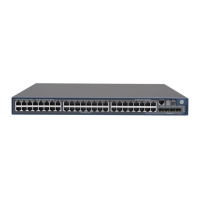
